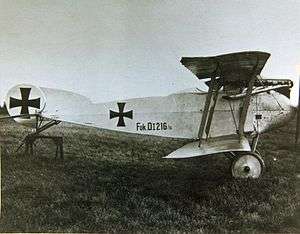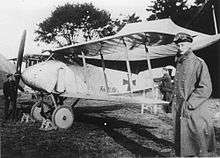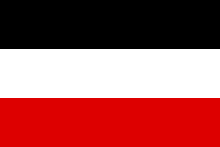Fokker D.I
| Fokker D.I and B.III | |
|---|---|
 | |
| Role | Fighter aircraft |
| Manufacturer | Fokker-Flugzeugwerke |
| Designer | Martin Kreutzer |
| Introduction | 1916 |
| Produced | July 1916 |
| Number built | 144 |
| Variants | Fokker D.II, D.III and D.IV. |
The Fokker D.I (company designation M.18) was a development of the D.II fighter. The D.I was also flown in Austro-Hungarian service as a reconnaissance aircraft under the designation B.III. Confusing the matter further, both the D.II and D.I arrived at the Front in German service at similar times, in July–August 1916. The main designer was Martin Kreutzer.
Design and development

Similar to the D.II, the D.I was an unstaggered single-bay, or Einstielig equal-span biplane. The upper fuselage was initially parallel with the upper wing and was fitted with the 75 kW (100 hp) Mercedes D.I six-cylinder water-cooled engine.
Control was achieved using wing-warping. The wings were also tested in twin-bay (Zweistielig) form. To improve visibility, the center section was cut back and the wings were slightly staggered and the top wing raised slightly.
These improvements were retained, and the airplane was ordered into production with an 89 kW (120 hp) Mercedes D.II inline engine and a single synchronized 7.92 mm (.312 in) lMG 08 machine gun. The Austro-Hungarian B.IIIs retained the D.I engine, and were armed with a Schwarzlose machine gun.
Operational history
Deliveries began in July 1916. 90 were delivered to the German Fliegertruppen, and 16 to the Austro-Hungarian Luftfahrttruppen (as the B III). Eight were license produced by the Magyar Általános Gépgyár in Hungary.
One Austro-Hungarian B III was experimentally fitted with a 119 kW (160 hp) Mercedes D.III engine. Another had ailerons instead of wing warping, and still another had long span, swept back wings.
Compared with aircraft in service at that time, such as the Albatros D.II and the Nieuport 11, this Fokker's design and performance were decidedly unimpressive, and further production did not take place.
The D.I was the basis for the D.III and D.IV.
Operators
.svg.png) Austria-Hungary
Austria-Hungary- Austro-Hungarian Imperial and Royal Aviation Troops
 German Empire
German Empire- Luftstreitkräfte
 Turkey
Turkey
Specifications (D.I)
Data from The Complete Book of Fighters [1]
General characteristics
- Crew: One, pilot
- Length: 6.30 m (20 ft 8 in)
- Wingspan: 9.05 m (29 ft 8 in)
- Height: 2.55 m (8 ft 4 in)
- Wing area: 20.00 m² (215.3 ft²)
- Empty weight: 463 kg (1,020 lb)
- Loaded weight: 670 kg (1,477 lb)
- Powerplant: 1 × Mercedes D.II 6-cylinder water-cooled inline engine, 89 kW (120 hp)
Performance
- Maximum speed: 150 km/h (81 kn, 93 mph)
- Rate of climb: 3.33 m/s (656 ft/min)
- Endurance: 1.5 hours
Armament
- 1 × forward-firing 7.92 mm (.312 in) LMG 08/15 machine gun
See also
- Related development
- Aircraft of comparable role, configuration and era
- Related lists
References
| Wikimedia Commons has media related to Fokker aircraft. |
Notes
- ↑ Gray and Thetford 1962, p.90
Bibliography
- Gray, Peter and Thetford, Owen. German Aircraft since the First World War. London:Putnam, 1962.
- Green William and Swanborough, Gordon. The Complete Book of Fighters. New York: Smithmark, 1994. ISBN 0-8317-3939-8.